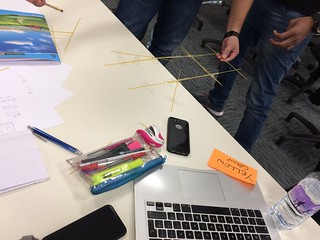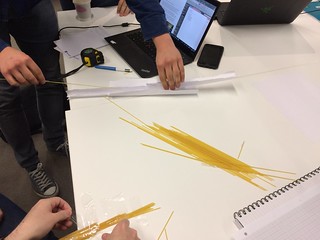Ports of Adventure to newer operating platforms and language environments have enabled users to play Adventure on successive generations of computing hardware and operating system environments. However the core of the game remains the same and concept, gameplay and feel. A player running the port to Mac OS/X or the console version for Windows XP is subject to essentially the same experience as those who encountered it on University computer servers in the 70s and 80s.
While the game is no longer actively developed the concept of Advent inspired a host of related programmes in the 1980s all vying for the hearts, minds, or money, of the world's growing band of computer enthusiasts and users.
Seeing Adventure running for the first time is like walking along the beach and picking up an interesting looking shell. Someone has left the terminal logged in... It intrigues with three sentences:
YOU ARE STANDING AT THE END OF A ROAD BEFORE A SMALL BRICK BUILDING . AROUND YOU IS A FOREST. A SMALL STREAM FLOWS OUT OF THE BUILDING AND DOWN A GULLY.Ahh, a game. What do I do? The blinking cursor invites me to write something.
help! I DON'T KNOW THAT WORD. help I KNOW OF PLACES, ACTIONS, AND THINGS. MOST OF MY VOCABULARY DESCRIBES PLACES AND IS USED TO MOVE YOU THERE. TO MOVE TRY WORDS LIKE FOREST, BUILDING, DOWNSTREAM, ENTER, EAST, WEST NORTH, SOUTH, UP, OR DOWN. I KNOW ABOUT A FEW SPECIAL OBJECTS, LIKE A BLACK ROD HIDDEN IN THE CAVE. THESE OBJECTS CAN BE MANIPULATED USING ONE OF THE ACTION WORDS THAT I KNOW. USUALLY YOU WILL NEED TO GIVE BOTH THE OBJECT AND ACTION WORDS (IN EITHER ORDER), BUT SOMETIMES I CAN INFER THE OBJECT FROM THE VERB ALONE. THE OBJECTS HAVE SIDE EFFECTS - FOR INSTANCE, THE ROD SCARES THE BIRD. USUALLY PEOPLE HAVING TROUBLE MOVING JUST NEED TO TRY A FEW MORE WORDS. USUALLY PEOPLE TRYING TO MANIPULATE AN OBJECT ARE ATTEMPTING SOMETHING BEYOND THEIR (OR MY!) CAPABILITIES AND SHOULD TRY A COMPLETELY DIFFERENT TACK. TO SPEED THE GAME YOU CAN SOMETIMES MOVE LONG DISTANCES WITH A SINGLE WORD. FOR EXAMPLE, 'BUILDING' USUALLY GETS YOU TO THE BUILDING FROM ANYWHERE ABOVE GROUND EXCEPT WHEN LOST IN THE FOREST. ALSO, NOTE THAT CAVE PASSAGES TURN A LOT, AND THAT LEAVING A ROOM TO THE NORTH DOES NOT GUARANTEE ENTERING THE NEXT FROM THE SOUTH. GOOD LUCK!Right, I'm starting to get this, lets see what the 'DOWNSTREAM' command does...
downstream YOU ARE IN A VALLEY IN THE FOREST BESIDE A STREAM TUMBLING ALONG A ROCKY BED. downstream AT YOUR FEET ALL THE WATER OF THE STREAM SPLASHES INTO A 2 INCH SLIT IN THE ROCK. DOWNSTREAM THE STREAMBED IS BARE ROCK. lift rock YOU ARE IN A 20 FOOT DEPRESSION FLOORED WITH BARE DIRT. SET INTO THE DIRT IS A STRONG STEEL GRATE MOUNTED IN CONCRETE. A DRY STREAMBED LEADS INTO THE DEPRESSION. THE GRATE IS LOCKED downstream YOU CAN'T GO IN THROUGH A LOCKED STEEL GRATE!
This is getting interesting, quick, grab a piece of paper and start drawing a mental map of where I was and where I'm going...
And so it goes on. Time passes, I snap back to myself for a moment, twenty minutes later! What's happening here? It's engaging, appealing, frustrating and rewarding, like getting into a good book but this one talks back to you.





